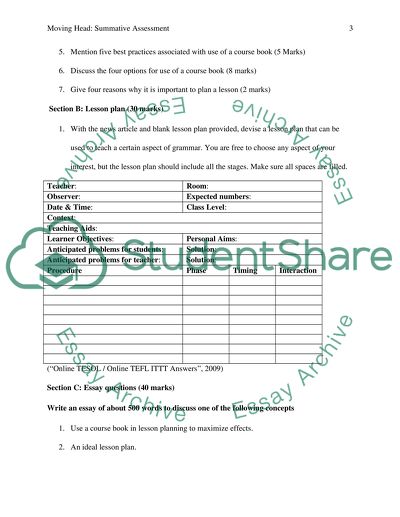Cite this document
(“Summative Assessment In Education Research Paper”, n.d.)
Retrieved de https://studentshare.org/education/1452546-summative-assessment-in-education
Retrieved de https://studentshare.org/education/1452546-summative-assessment-in-education
(Summative Assessment In Education Research Paper)
https://studentshare.org/education/1452546-summative-assessment-in-education.
https://studentshare.org/education/1452546-summative-assessment-in-education.
“Summative Assessment In Education Research Paper”, n.d. https://studentshare.org/education/1452546-summative-assessment-in-education.


